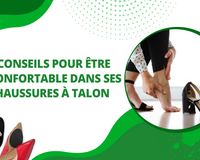
Orthopedic insoles for Morton's neuroma are generally designed to relieve pain and discomfort associated with this plantar condition. Thus, custom orthopedic insoles are most often made of a flexible material which adapts to the morphology of your foot and offers better support to the foot arch.
However, these Orthopedic insoles for Morton's neuroma can also limit inflammation and thus relieve the patient suffering from the pain caused by this pathology. In some cases, neuroma orthopedic insoles may also be designed to correct a deformation or posture, which can then reduce the pain and discomfort associated with Morton's neuroma.
So, what are the risk factors for Morton's neuroma and how can orthopedic insoles really relieve the pain associated with this foot condition? In all cases, Smartfeet explains everything to you.
What is Morton's neuroma?
Morton's neuroma, also called Morton disease or syndrome is a painful condition that most commonly occurs on the front of the foot, and specifically between the third and fourth toes. Thus, this condition is caused by the compression of a nerve at the level of the metatarsal heads or even excessive friction on an intermediate nerve which is located just under the skin.
However, the most common symptoms of Morton's neuroma are numbness, sharp pain, and tingling and pain caused by pressure on the affected area.
However, it is important and even essential to recognize the signs and symptoms of Morton's neuroma, in order to be able to begin treatment as early as possible. Thus, symptoms can be relieved through natural treatment through orthopedic insoles, anti-inflammatory medications and even physiotherapy.
In some cases, to remove the compressed nerve and relieve the pain, surgery may be necessary, if natural treatments have not produced positive results.
✅ Therefore, it is very important to consult a qualified health professional if you think you have Morton's neuroma..
Risk factors for Morton's neuroma
The main risk factors for Morton's neuroma are quite numerous. Although women over the age of fifty are more at risk than men, because their toes are generally smaller and their feet narrower, we can still note that a genetic predisposition can also favor the appearance of neuroma. of Morton in any person. So we can have:
- Overweight
- Repetitive movements and poor posture.
- Overuse of feet.
- Plantar morphology (specifically flat feet)
- Hallux valgus feet, etc.
- Claw toes and hammer toes, etc.
- Wearing tight or uncomfortable shoes.
- Etc...
How to relieve pain from Morton's neuroma?
Although in reality, there are several ways to relieve the pain caused by Morton's neuroma, the nagging question is whether Morton's neuroma can go away. In fact, for patients suffering from this foot condition, wearing Morton's disease shoes or orthopedic insoles can help them to relieve pain and thus limit inflammation.
In addition, they can also use other natural solutions such as foot baths with essential oils or osteopathy sessions to reduce foot pain.
✅ However, it is also advisable to regularly avoid activities such as running and jumping that put excessive pressure on the foot.
However in some cases, if all these treatments fail to produce any positive results, Morton neuroma surgery may be considered to remove the compressed nerve and relieve the pain.
Orthopedic insoles: an effective treatment

Orthopedic insoles are undoubtedly the best and effective treatment for Morton's neuroma. These can not only help relieve pain, but they can also help alleviate discomfort associated with the condition by providing additional support to the foot and obviously distributing body weight evenly across the entire surface of the foot.
Because of this, special insoles for Morton's neuroma can also help reduce the pressure that is placed on the compressed nerve, which may avoid the need for surgery to decompress the nerve.
Morton neuroma insole: Which type to choose?
Specially designed to provide additional support to the feet, orthotic insoles can help reduce the symptoms of Morton's neuroma. This is why these must be tailor-made and adapted to this pathology.
Thus, at Smartfeet, you can find several models of Orthopedic sole for Morton's neuroma to provide specific correction to each foot.
How does an insole work for Morton's neuroma?

Morton neuroma insoles are primarily designed to relieve the discomfort caused by this syndrome. Thus, they are made to measure and can be adjusted according to the volume and shape of each individual's feet.
They generally consist of a retro-capital support bar located at the back of the second, third and fourth toes, so the aim is to enlarge the intermetatarsal space and thus decompress the sensory nerve.
Using an insole for Morton's neuroma

Before using an insole for Morton's neuroma, it is very important to consult a health professional or a podiatrist to ensure that these insoles are suitable for your condition and your lifestyle.
Once the insoles are fitted to your feet, they should normally be worn every day. You can therefore use them inside your shoes, but also your slippers.
Which shoes for Morton's neuroma?
The most suitable shoes for Morton's neuroma are most often those that are designed to provide the most stability and support possible. THE shoes with wide soles and low heels are ideal, as they provide additional support and limit pressure on the metatarsal nerve.









